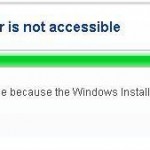

- #Nvstor64.sys blue screen windows 7 install#
- #Nvstor64.sys blue screen windows 7 drivers#
- #Nvstor64.sys blue screen windows 7 update#
- #Nvstor64.sys blue screen windows 7 driver#
If it does not make sense to remove the device, i.e.
#Nvstor64.sys blue screen windows 7 driver#
Devices can be uninstalled through device manager, and then the device itself should be physically removed from the system if no driver updates are available for the device. To remove drivers, do so by uninstalling the device or software associated with the driver.
#Nvstor64.sys blue screen windows 7 drivers#
If you have devices you bought yourself, the drivers for those devices need to be downloaded from the manufacturer support site for those devices. Your drivers should be found from your motherboard support site (ASUS, Gigabyte, MSI, etc.) or your vendor support site (Dell, HP, Toshiba, Sony, etc.) first.
#Nvstor64.sys blue screen windows 7 update#
To update drivers, make sure to download the drivers from the manufacturer and not using 3rd party programs. Ralink RT2561 RT2661 series Wireless LAN Card (you may have a different manufacturer) NVidia Compatible Vista Kernel Mode Driver (likely belongs to nForce chipset drivers) NVidia Storage Driver (nForce chipset driver)

Western Digital SCSI Arcitecture Model (SAM) WDM driverĢ008 driver version has known BSOD issues in Win7 Check for BIOS updates for the system from Cyberpower PC's support site.ĪSACPI.sys Sun Mar 27 20:30:36 2005 (42476C4C)Īsus ATK0110 ACPI Utility (a known BSOD maker in Win7 and Win8). Your BIOS is out of date and not likely to work well with Windows 8. Driver updates are not always necessary and some updates can actually decrease system stability rather than increase it, so it is usually better not to update unless a device or its driver is causing problems with the system. If you need help finding driver updates for a certain device, please ask us for advice instead of using software. This can lead to conflicts and blue screen crashes.
#Nvstor64.sys blue screen windows 7 install#
Updating drivers using 3rd party software can install drivers that are not designed for the PC's power scheme those drivers have to be downloaded from the PC Vendor (HP, Lenovo, Dell, Sony, Toshiba, etc.). Bulk updating also increases the chances of installing buggy drivers. Some of those programs find drivers for devices similar to but not exactly the same as the hardware actually on the system. I do not recommend automated driver update software.


 0 kommentar(er)
0 kommentar(er)
